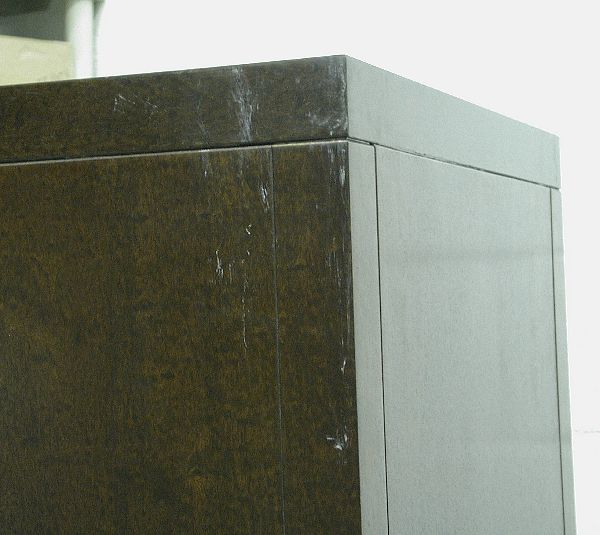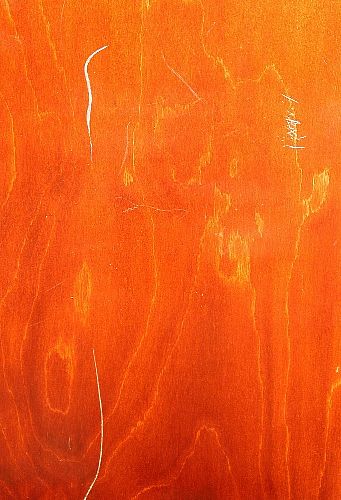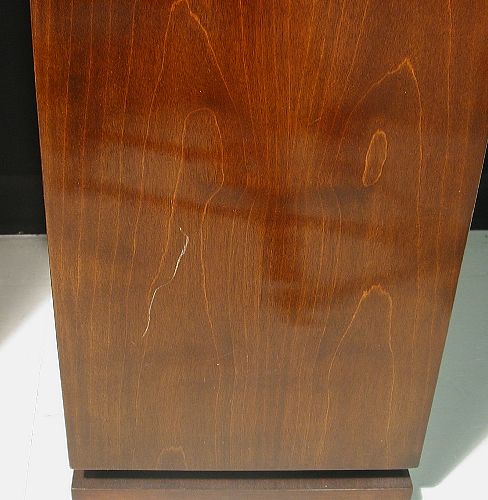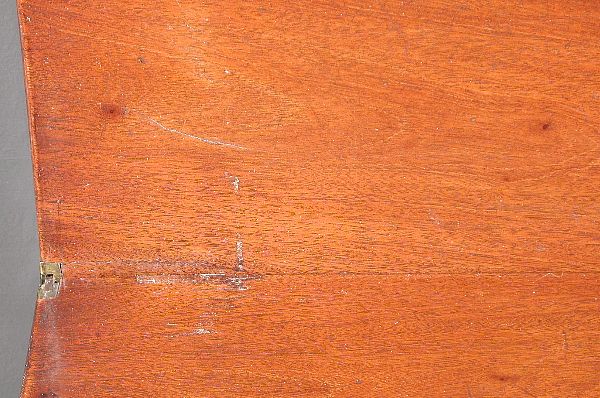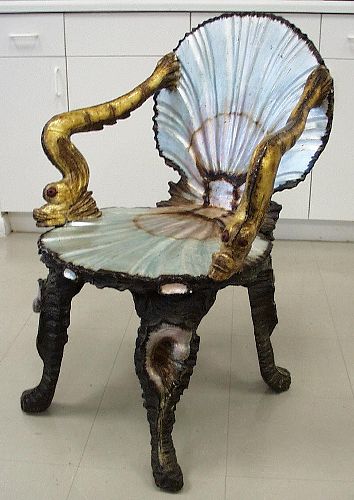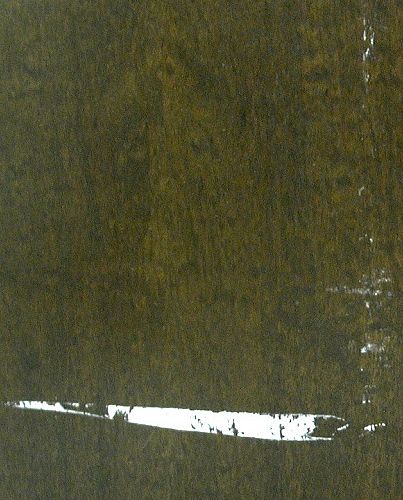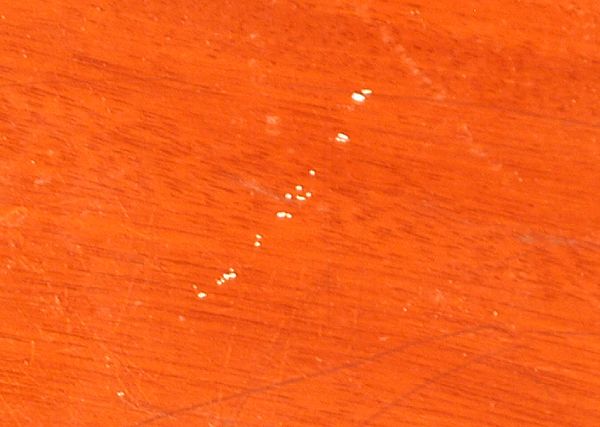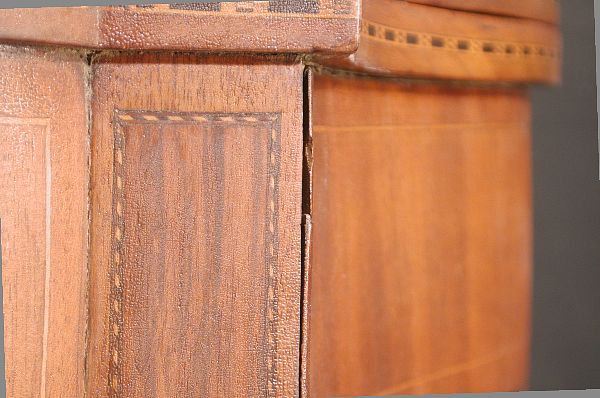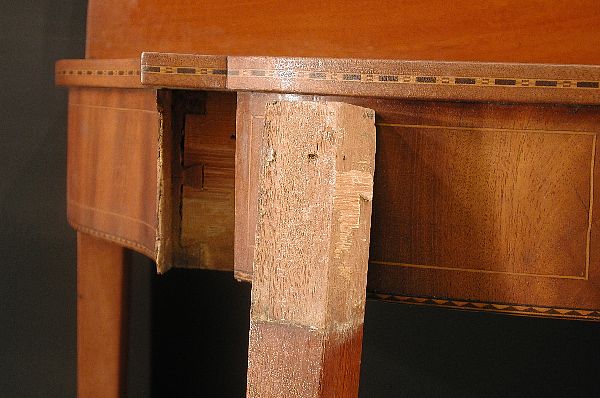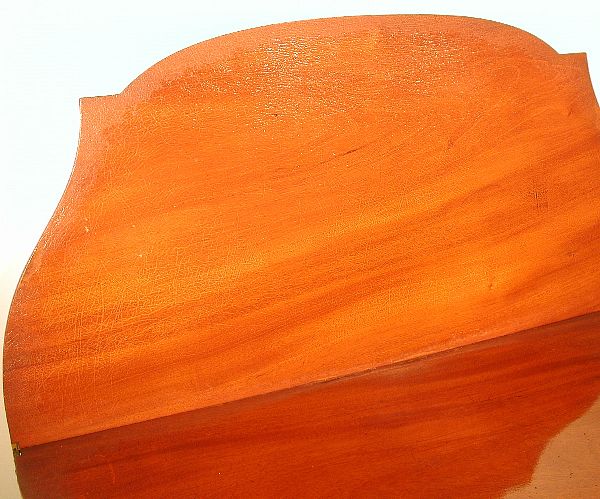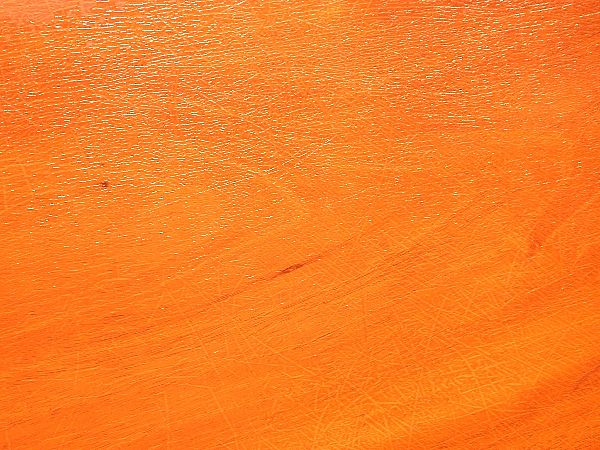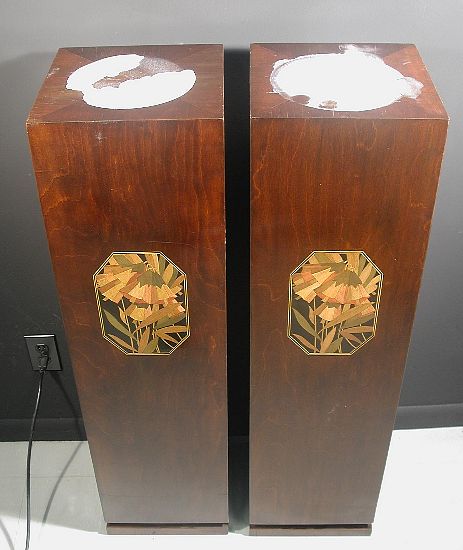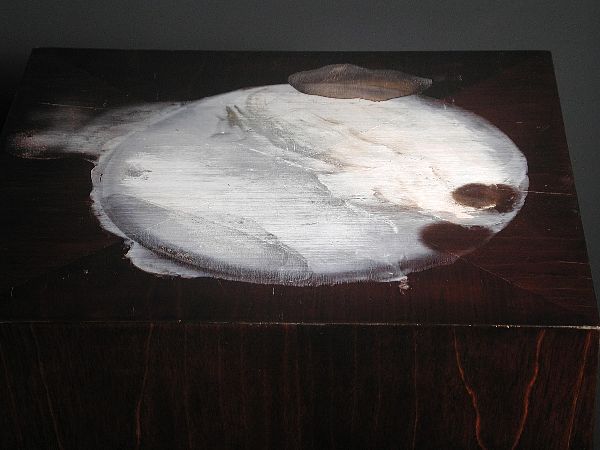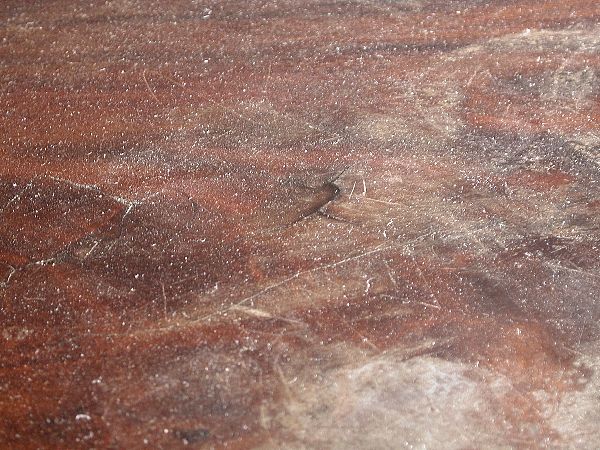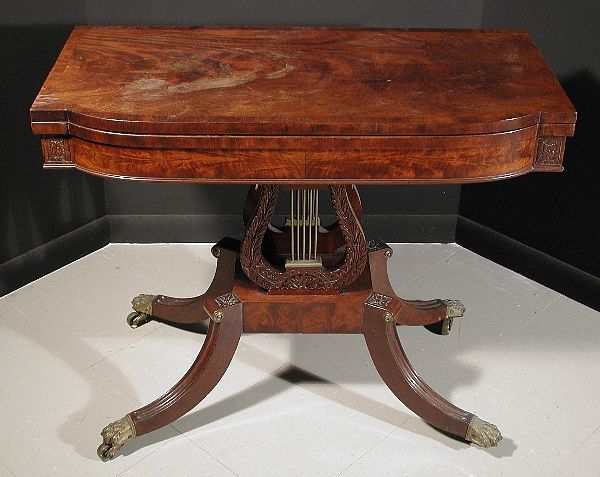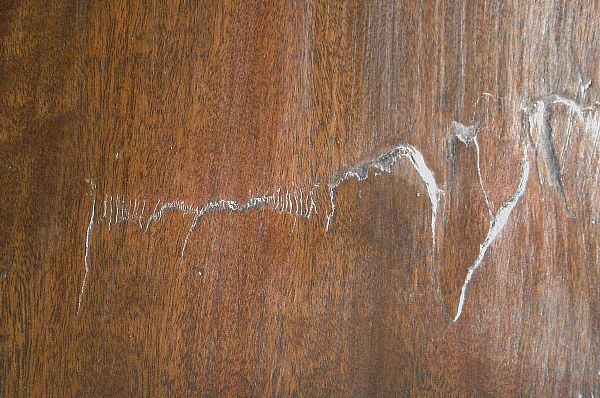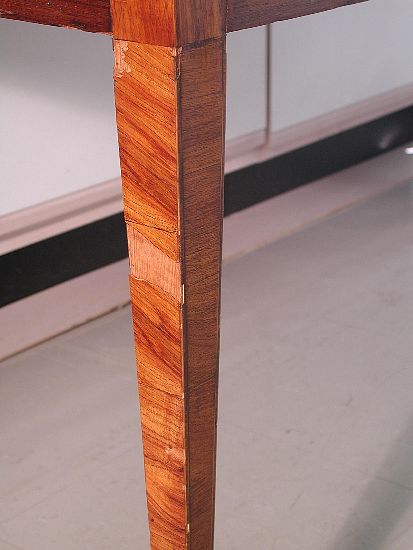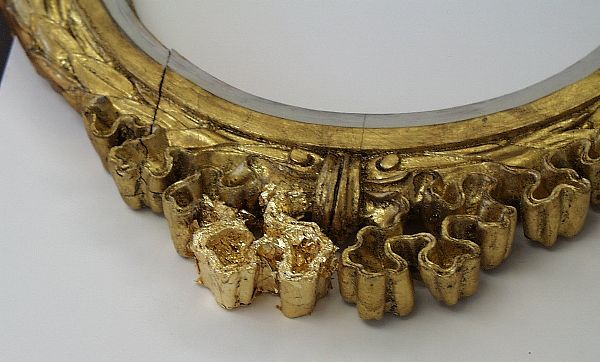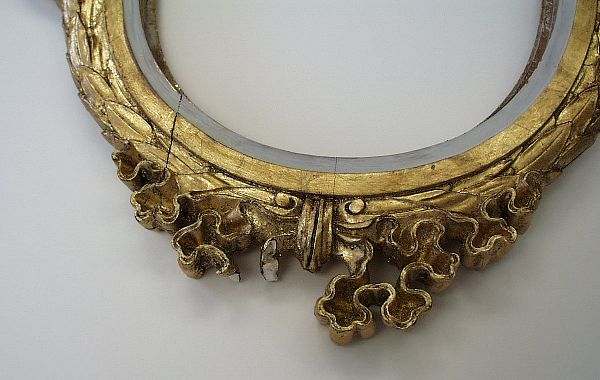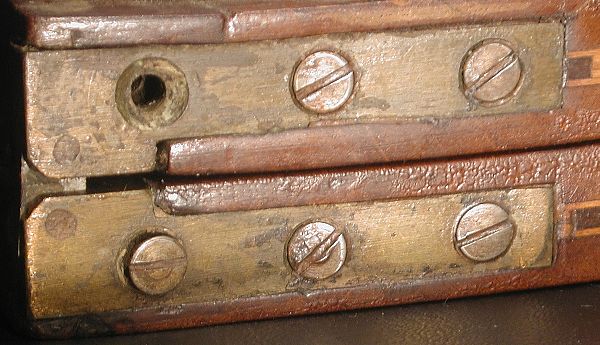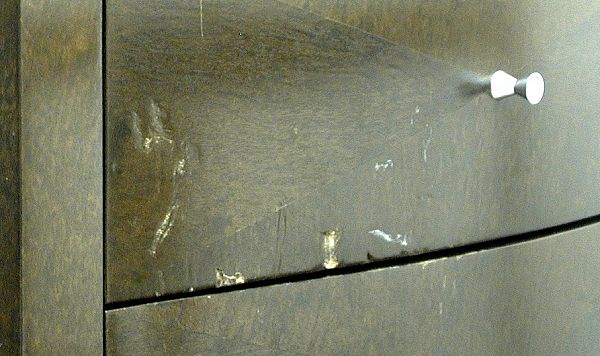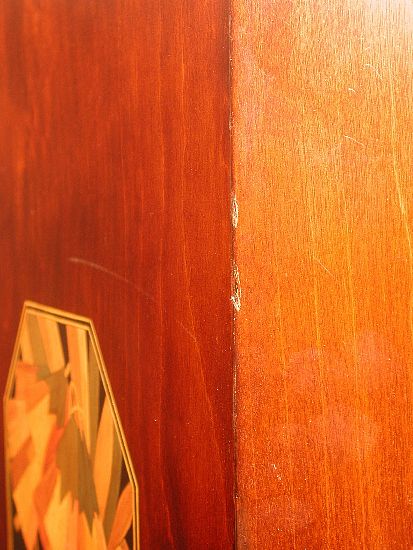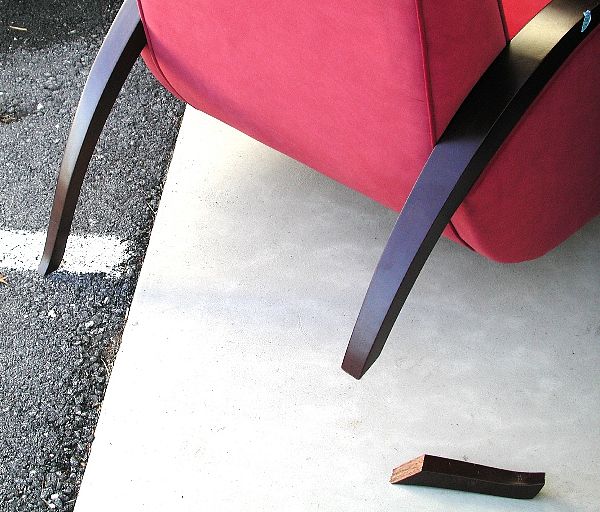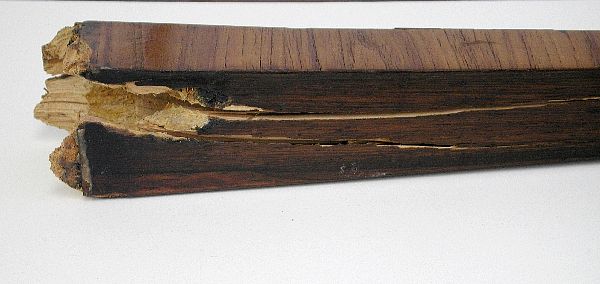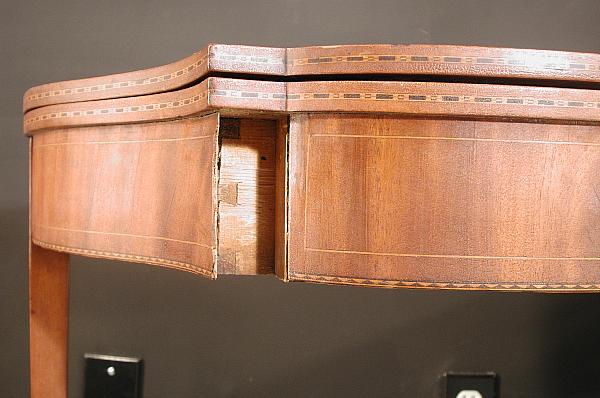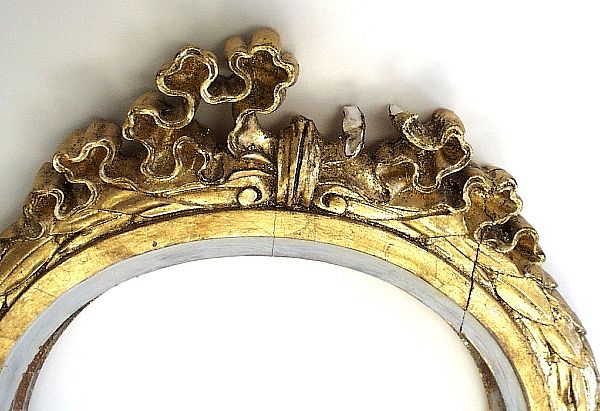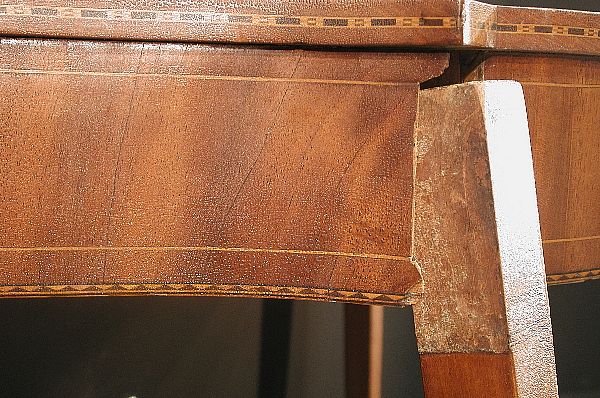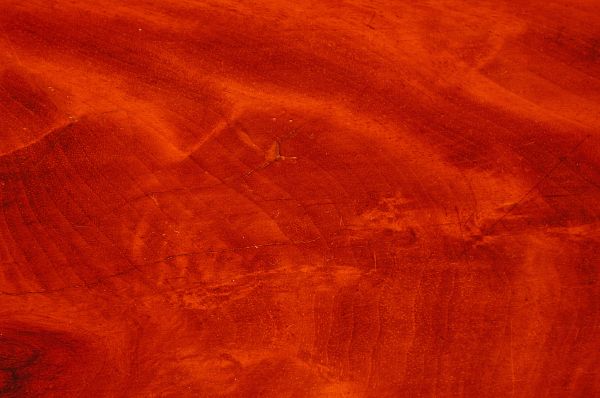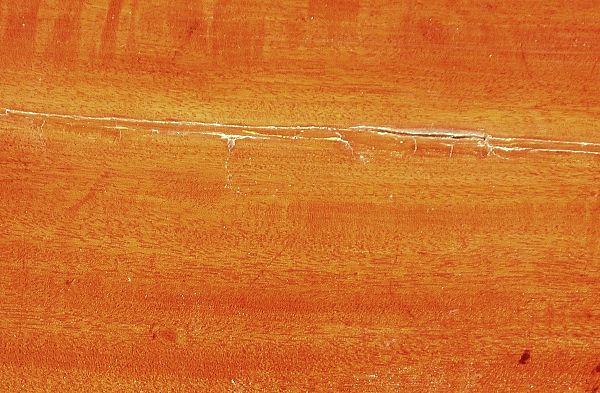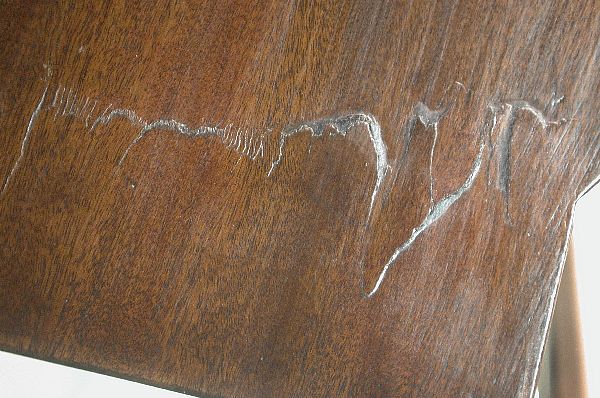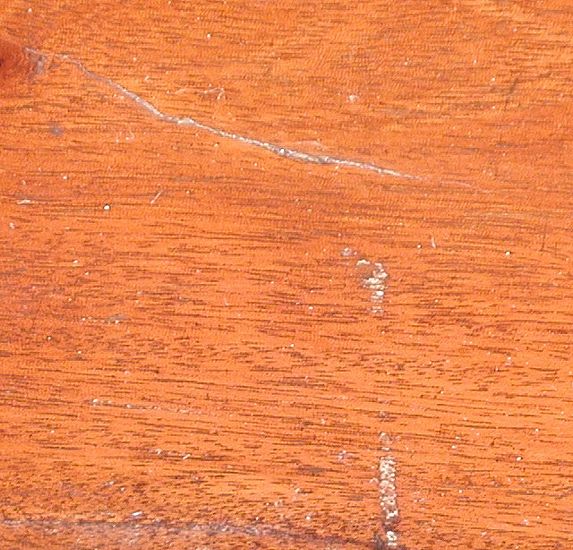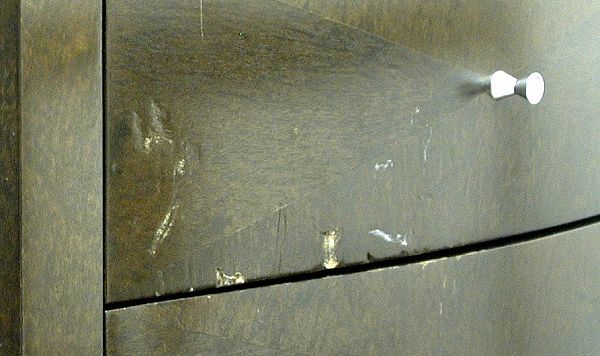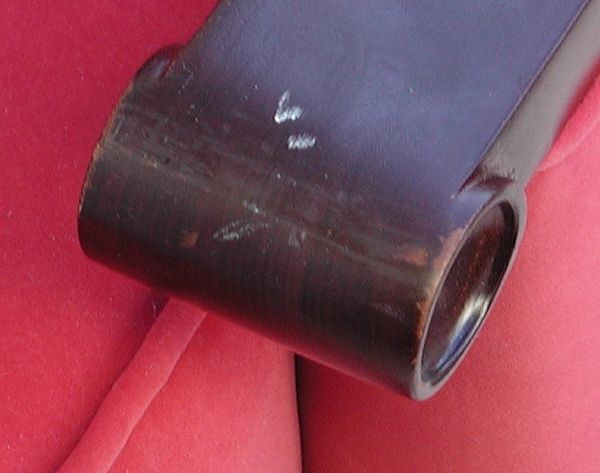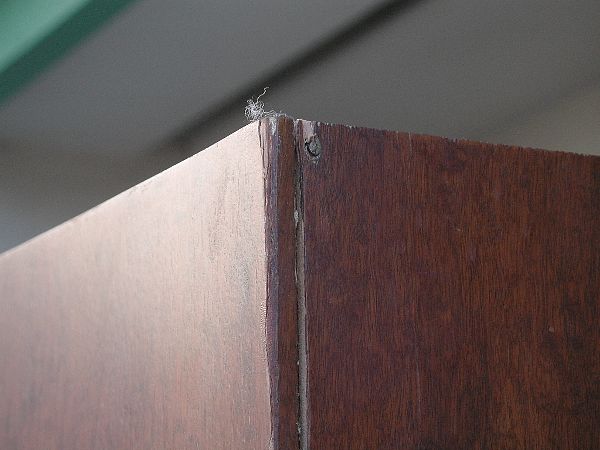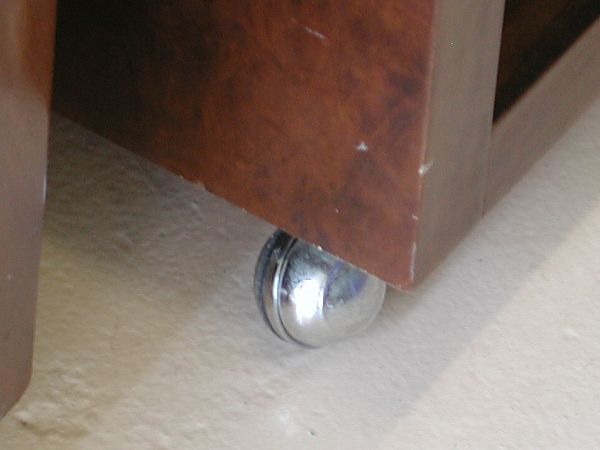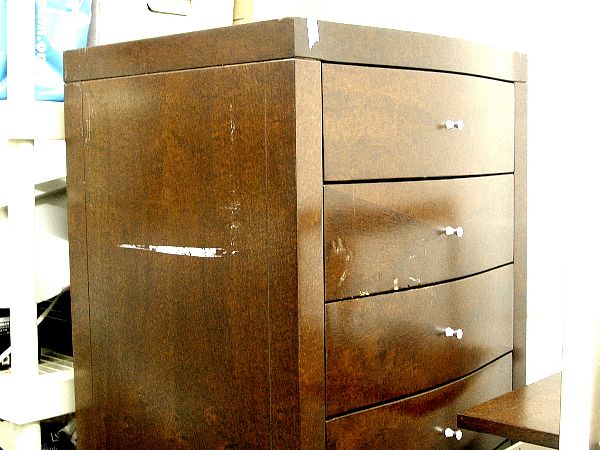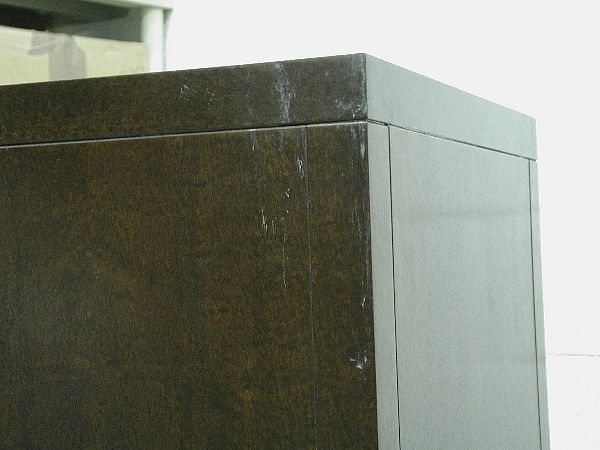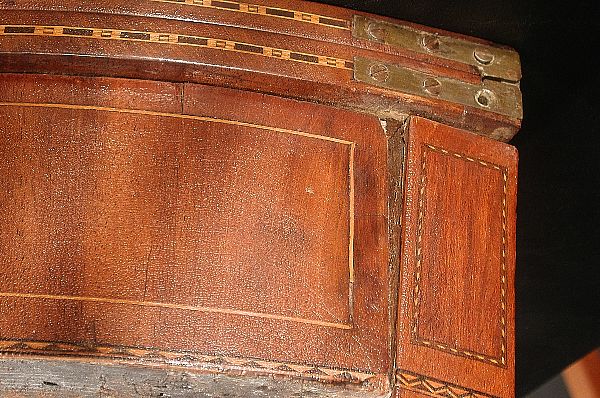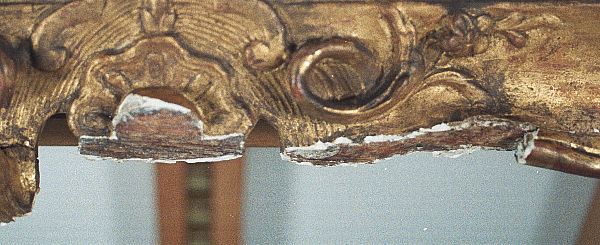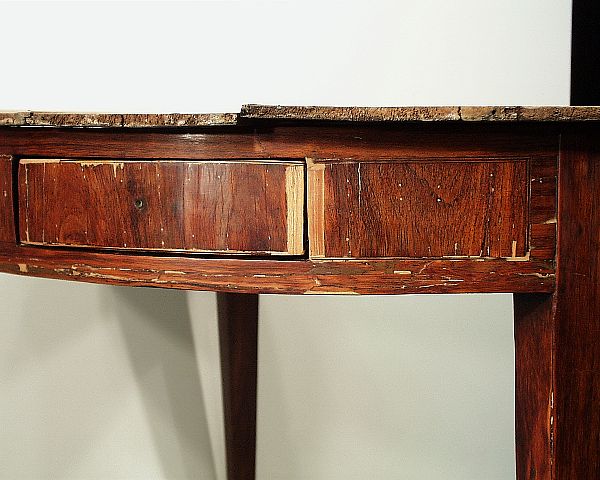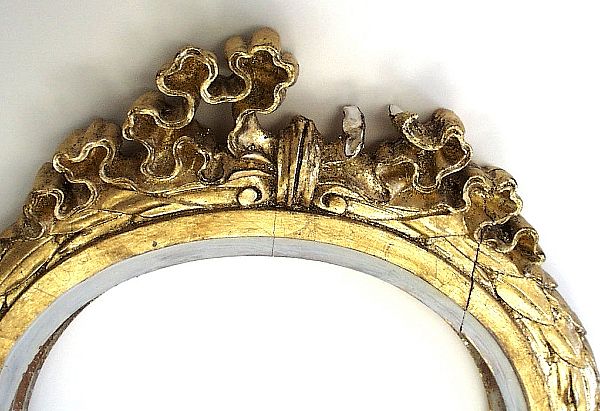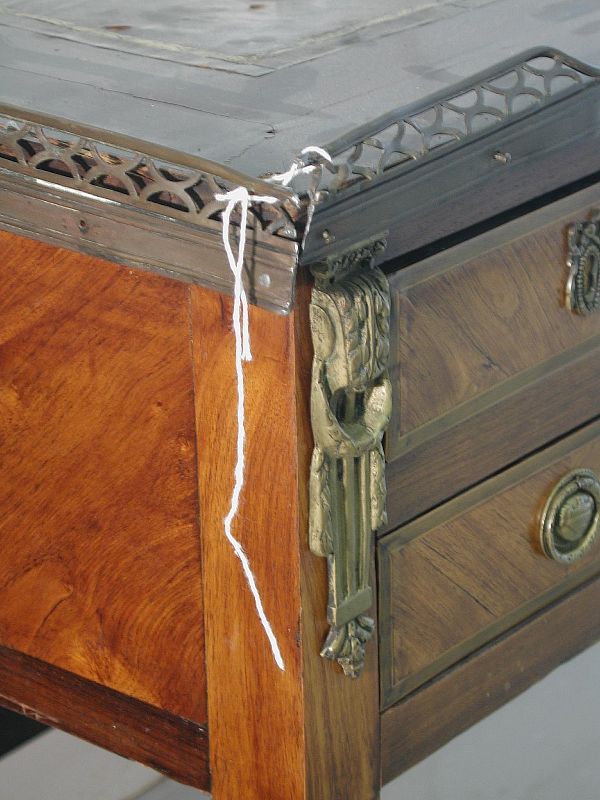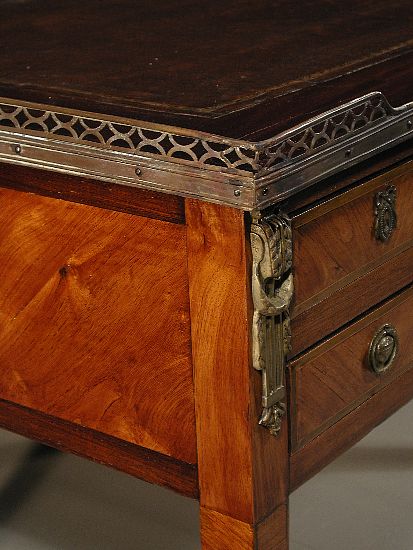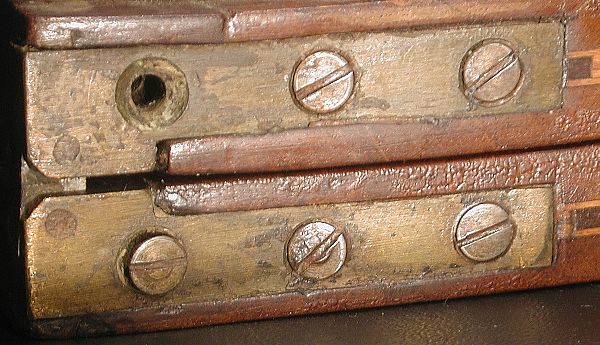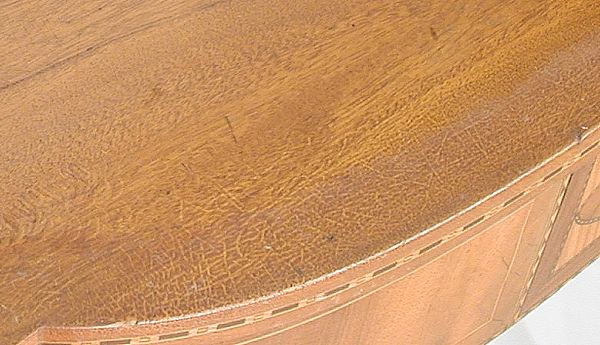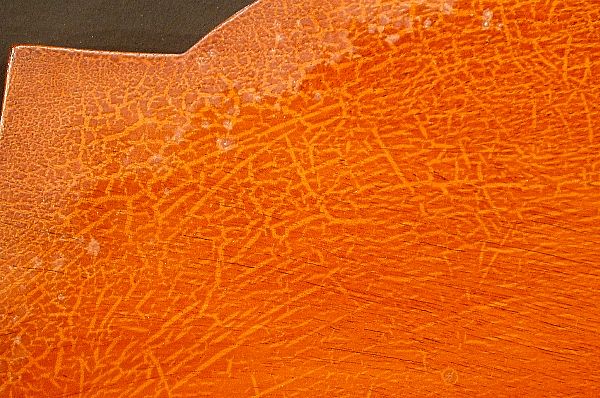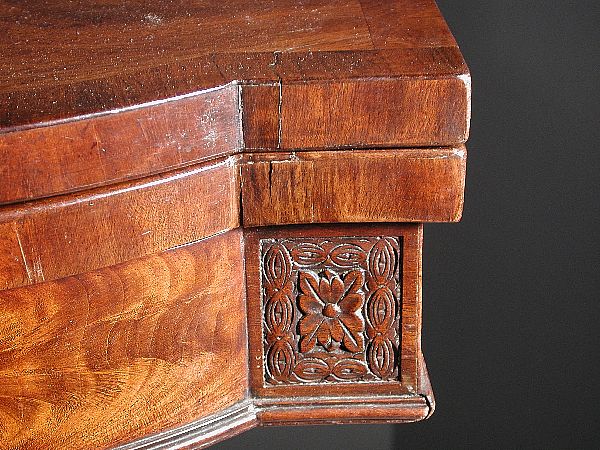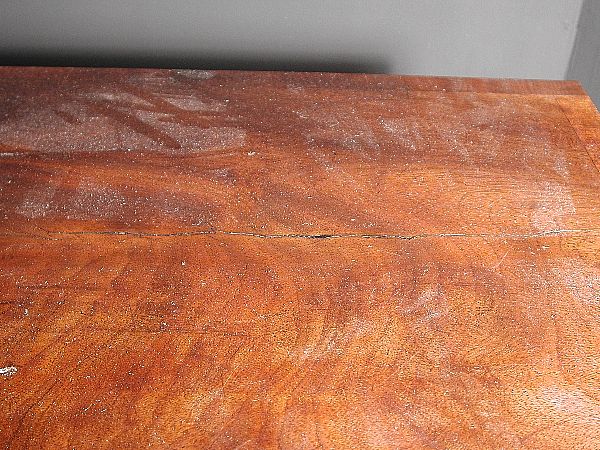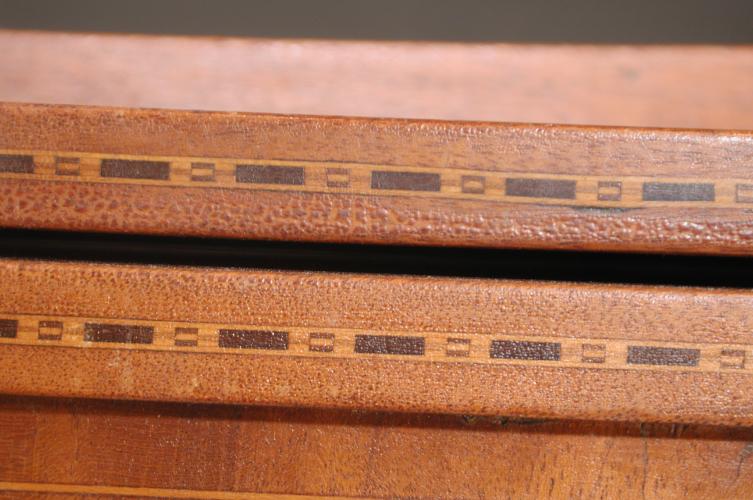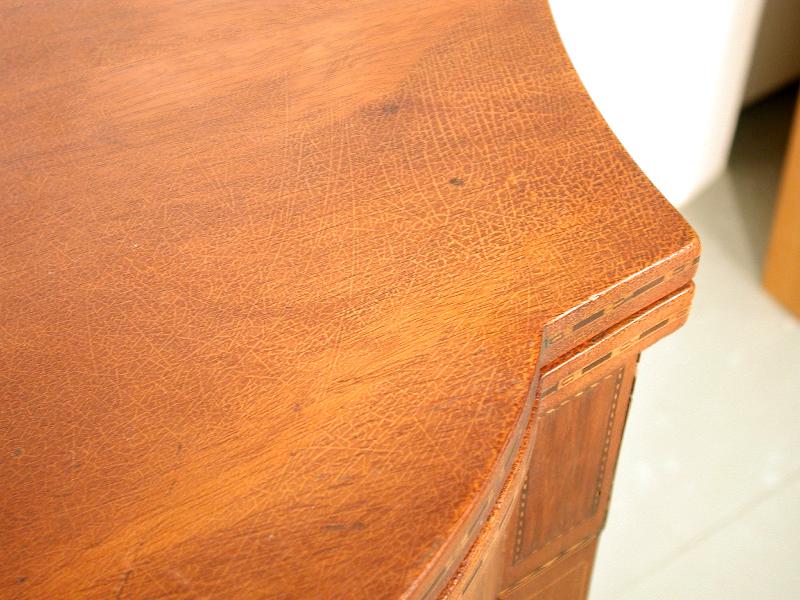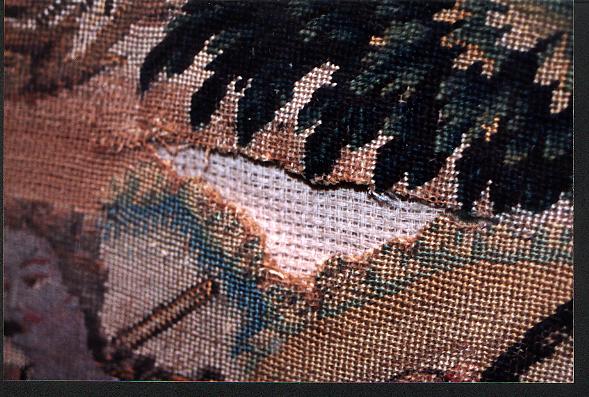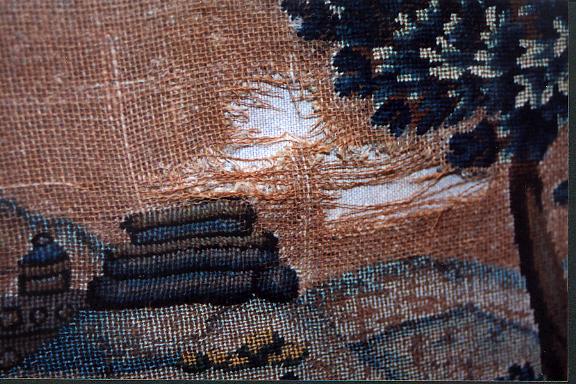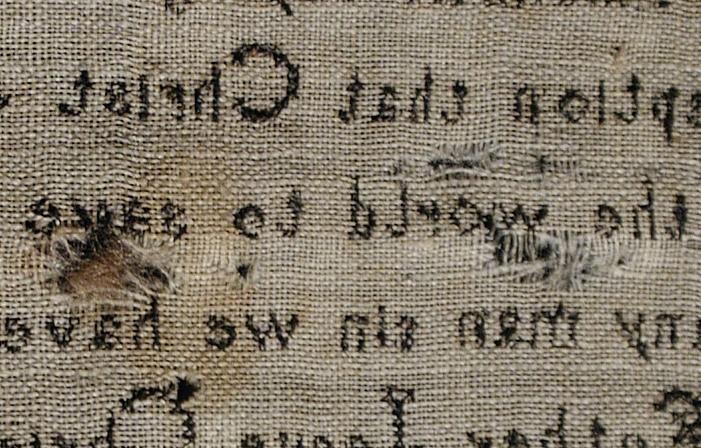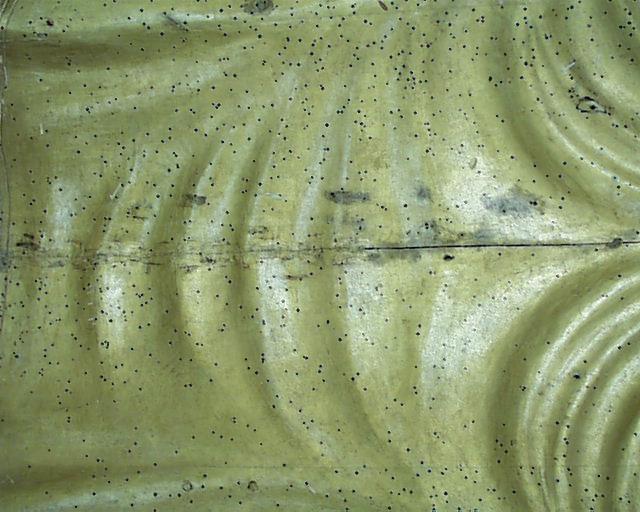| Abrasions: | Loss of media (and often the ground) caused by rubbing or scraping. |
|---|---|
| Accretions: | An accumulation of extraneous matter on the surface of the painting that alters the original design, i.e. dirt, dust, grime, etc. |
| Adhesive Failure: | Deterioration of the adhesive to the point where it is collapsing, or has collapsed. |
| Age Crackle: | A network of fine lines created by embrittlement of the entire finish layer (as opposed to “crazing” which develops in the surface of the finish layer); continued expansion and contraction of the layer’s substrate exerts a force which the aging finish layer can no longer accommodate as it embrittles, resulting in crackle of the finish. |
| Aligatoring: | See “Traction Crackle”. |
| Batten: | A supplemental piece of wood attached to another wood surface to hold it in plane. Most frequently used with a panel and sometimes referred to as a “cleat.” |
| Bleaching: | Fading induced by the ultra-violet portion of the light spectrum. Found most heavily in with natural light, but also induced by florescent lighting. |
| Bloom: | Superficial cloudy area in varnish; most often caused by moisture penetrating the varnish layer. Similar to “blanching” although blanching can result from other causes. |
| Bole: | A clay coating used to produce a blemish free, smooth substrate beneath a top coating of paint, lacquer or a gilt top coating. |
| Check: | An incomplete, or partial, split along the wood’s grain resulting from uneven shrinkage in adjoining areas of the wood. |
| Chip: | A small loss resulting from force, tension or impact. |
| Cleat: | See “Batten”. |
| Cleavage: | A separation between two previously bonded layers of a structure such as inlayer veneer separating from its support, or the varnish layer peeling from a varnished surface. |
| Compensation: | Replacement of a missing material. |
| Consolidation: | The stabilization of a severely weakened material by the introduction of media designed to return strength to it. When possible, this consolidant media is inserted or injected below the surface to minimize visual alteration, but there are extreme instances where the entire object will be topically consolidated by spray or emersion. |
| Corrosion: | Degradation of material from a chemical or electrolytic reaction; generally applied to metal and stone degradation. Rust, bronze and cooper corrosion are several of many types of corrosion, but the most frequent found in relation to furniture. |
| Crazing: | A microscopic network of fissures in an old finish layer (varnish, lacquer or shellac) from age degradation. A hazy look resembling bloom but bloom results from moisture while crazing is age related. |
| Crackle: | A network of cracks in a finish or paint layer resulting from one of several different causes. See “Tradition Crackle” and “Age crackle”. |
| Dent: | A depression caused by a blow or pressure. |
| Disfigurment: | A change, which defaces, modifies or blemished the original appearance and intention of the maker; they may be intentional (as an element of a different style) or accidental (as stains). |
| Distortion (warping): | Concave or convex distortion parallel to the tree-stem axis. |
| Element Broken: | Forcibly fractured into two or more pieces. |
| Element Missing: | One which is lost. |
| Element Separated: | One which has become disconnected. |
| Fading: | In painted furniture, loss of brightness or brilliance of the color(s). |
| Figure: | The appearance of the wood surface created by its distinct grain pattern, resulting from the anatomical structure, irregular defects or coloration. |
| Fill: | Compensation in the replacement of missing material in a localized area rather than an entire element. |
| Finish: | The final surface appearance of the object. It may or may not have a surface coating such as wax, shellac, varnish, and lacquer. |
| Flaking: | Extreme cracking causing paint and/or ground layer to dislodge from the support, often through a combination of cleavage and cracking. |
| Flight Hole: | Holes created by wood boring insects, generally a wood beetle often it has matured from its larva stage and eaten its way out of the wood. These are referred to as “flight holes” because the beetle has now flown from this wood. (See ” Wood Beetle”). |
| Frass: | A crumbly, sawdust like refuse left by wood boring insects; generally associated with flight holes. See “Flight Hole”. |
| Fungus: | See “Mold”. |
| Gouge: | Depression or loss created by impact with a sharp object. |
| Graining: | A faux technique to replicate the appearance of a desired grain of wood (figure) using paint applied to a wood surface. A particularly valuable technique to restore missing areas of veneer when it is historically important to retain as much of the original veneer as possible. |
| Grime: | Surface dirt or dirt embedded in a finish. |
| Impact Damage: | Multiple losses, abrasions, tears, etc. from a major impact. |
| Inpaint: | Application of paint WITHIN the confines of a loss to re-establish visual continuity of the object. (See “Overpaint”). |
| Insecure: | Loosely attached, not firmly and securely attached. |
| Insect Damage: | Damage caused by a present or previous insect infestation. |
| Insect Infestation: | A colony of one or more species of insects actively living and breeding within an object. |
| Instain: | Application of stain WITHIN the confines of a loss to re-establish visual continuity of the object. |
| Joint Separation: | A separation between structural and/or decorative elements where they join together. Adhesive failure, shrinkage of the wood and disjoinment by force or impact and failure of previous repairs are major causes. |
| Loose Joint: | See “Joint Separation” |
| Loss: | A piece of material, element, etc. separated form the whole of the object. |
| Marbling: | A faux technique to replicate the look of marble using paint, applied directly to the wood surface. |
| Metal Hardware: Abraded | Gouged, dented or scraped by forcible contact with another surface. |
| Metal Hardware: Broken | Forcibly fractured into two or more piece. |
| Metal Hardware: Corroded | See “Corrosion”. |
| Metal Hardware: Distorted | Bent or misshapen. |
| Metal Hardware: Insecure | Attached, but loose and not firmly attached. |
| Metal Hardware: Missing | One which is lost. |
| Metal Hardware: Loss | A piece of the hardware separated from the whole of the hardware piece. |
| Metal Hardware: Over Polished | Repeatedly polished until the surface is no longer crisp or decorative features have been worn away. |
| Metal Hardware: Polish Residue | The remains of polishing materials left in crevices of the hardware, distinguished by a whitish or greenish white powder. |
| Mold: | Any one or more fungal growths attacking and disintegrating organic matter. Mold colonies are generally comprised of several different fungi; all of which attack the host organic matter. |
| Overpaint: | Restoration requiring in painting where the restorer does not have skill enough to retouch within the damage area alone without having to extend the restored area substantially beyond the boundaries defined by the damage. |
| Oxidize: | A chemical reaction of oxygen with another material creating a change or reduction (binary compound) in the material being attacked by the oxygen. Metallic oxidation (rust, cooper and brass corrosion), organic oxidation of leathers, woods, textile fibers, etc. are most frequently associated with furniture. |
| Planer Distortion (Bend): | A distortion at right angles to the tree-stem axis. |
| Plate: | See “Batten”. However, plates are sometimes metal while battens are thought of as wood. Also called “mending plates.” |
| Re-carving: | To replicate a missing or broken decorative element by cutting material with sharp tools. If the carve use period tools, the carving can be duplicated more accurately, but one must be careful not to deceive. |
| Shim: | A piece of wood used to fill a void or stabilize a secondary element. |
| Splice: | A method of inserting one piece into another. |
| Split: | A continuous break in wood, along the grain, and completely from one side of the piece to the other. |
| Structure: | The visual surface of the object (e.g. veneer, etc.) |
| Stain: | Discoloration or spotting created by contact with a foreign material |
| Traction Crackle: | Cracks in a paint or varnish film caused by differential drying of two layers generally having similar but slightly different compositions allowing one to dry more quickly than the other resulting in the tradition of one of the two (or more) films splitting, or cracking, the layer. Also called “Alligatoring.” |
| Upholstery Deterioration: | Degradation caused by environmental elements; particularly the ultraviolet spectrum of light. |
| Upholstery Infestation: | An active colony of insects living and breeding within the upholstery. |
| Upholstery Insect Damage: | Damage caused by a present or previous infestation of insects. |
| Upholstery Mold/Fungi: | Active attack or previous damage from mold. (See “Mold”) |
| Upholstery Shreding: | Tearing into irregular strips. |
| Upholstery Understructure Problems: | Problems related to unevenness in the understructure, such as webbing, etc. |
| Upholstery Tear: | An opening rent or rip in the material created by force, or deterioration from age when the force of stretching the fabric is too great for its condition. |
| Water Damage: | Staining, planar distortion, finish damage, loosening or other damage caused by contact with water. |
| Warp: | See “Planar Distortion”. |
| Wax Build-up: | Accumulation from multiple layers of wax polish being applied without removal of the ones below the most recent layer. |
| Wood Beetle: | Any of various insects, which bore into or out of wood. Sometimes called “wood worm.” |
Degree:
The comparative extent of damage described by the following adjectives:
Negligible:
insignificant damage that may not need immediate attention but needs to be monitored.
Slight:
damage slightly more noticeable than “negligible”; should be monitored by a conservator.
Minor:
existing condition, which is relatively unimportant; generally does not involve risk of loss; should be monitored by a conservator.
Moderate:
damage is noticeable and may be of middle or increasing severity of size; not serious but should be monitored or corrected by a conservator.
Marked:
readily identified damage, often with distinctive features and requires remediation by a conservator.
Major:
damages or existing condition are noticeable, if not conspicuous in extent; stability of the work is in question, often great risk is a factor. Requires immediate attention by a conservator to prevent further damage or loss.
Extreme:
most severe damage or existing condition has become very advanced. The work is insecure, no longer stable and at great risk.
It is important to understand that damage to a work of art is rarely static and the work will continue to deteriorate. It is best to have a conservator monitor works annually.


